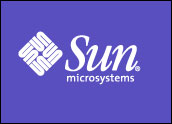
Sun Microsystems has unveiled its latest computing-on-demand initiative, offering access to processor power for US$1 an hour, as it becomes the latest major tech firm bidding to make real the vision of computing power as a commodity that can be bought and sold as needed.
Sun said it envisions computer processing power becoming another utility that companies buy much in the way they do electricity or water. In a staged event in New York Tuesday, it unveiled a pricing plan that starts at $1 per computer processing unit hour, with “packs” of grid hours sold in bundles.
The company said the scheme offers the benefits of outsourcing without long-term contracts or other commitments. Eventually, companies that have extra computers laying dormant could sell processing power back to the grid, Sun said.
“We are staking out new ground — taking our intellectual property and turning it into pay-for-use network services,” Sun President Jonathan Schwartz said. “What Salesforce.com does for sales-force automation and eBay does for auctions, we are planning on doing for technology infrastructure.”
Give and Take
Sun envisions companies that have large back-end projects to complete being among its first customers, with tasks such as simulations, modeling and rendering among those most likely to be put onto the grid.
Schwartz said Sun sees enterprises, government agencies and others buying grid time much in the way consumers buy wireless calling plans and said that it would offer wholesale discounts to companies that are interested in reselling the grid access.
“We aren’t just going to open the door to our customers to create wealth more efficiently — we’re going to open that door for all our partners around the world,” Schwartz added.
Same Game, New Name
Several of the largest technology firms have fostered similar visions of computing power being traded as a commodity. IBM has made on-demand computing a centerpiece of its overall strategy, and Hewlett-Packard, which like Big Blue has had huge success in the outsourcing market, has put its own twist on the scheme.
However, many analysts say that although on-demand access is the logical result of the well-documented trends in the tech industry toward outsourcing and of Web-based software schemes such as the one Salesforce.com has made a splash with in the CRM niche, there remain a number of hurdles preventing public computer grids from being widely used. Those include security concerns and uncertainty about pricing.
“Sun deserves credit for trying something new in terms of pricing to draw attention to what it’s offering,” Yankee Group senior analyst Dana Gardner said. “But it’s not clear what type of pricing model is going to entice enterprises to give this a shot.”
Sun has tried alternative pricing for its traditionally sold software, as well, in the past, Gardner noted, with mixed results for its subscription programs aimed at reducing up-front costs for customers.
A Matter of Time — and Money
Forrester analyst Frank Gillett said the on-demand push will continue because cutting costs remains a priority among information technology managers and CIOs, many of whom have had mixed results with traditional outsourcing options.
“Long-term, companies want to be able to do more to make computers advance their business, but the days when there was no limit to what enterprises could spend to do that are over,” Gillett told the E-Commerce Times.






















































Social Media
See all Social Media